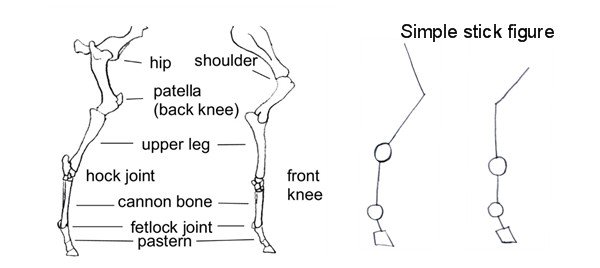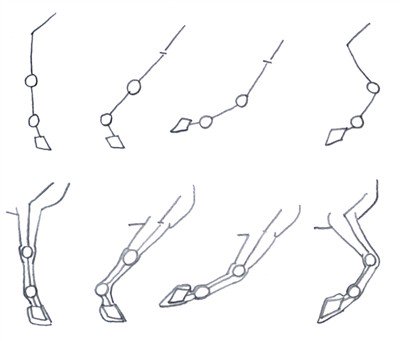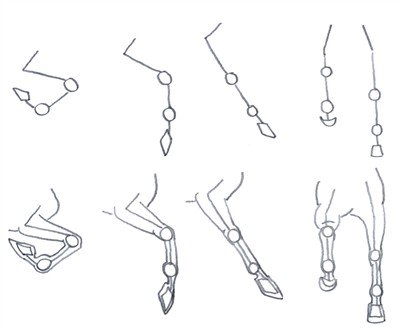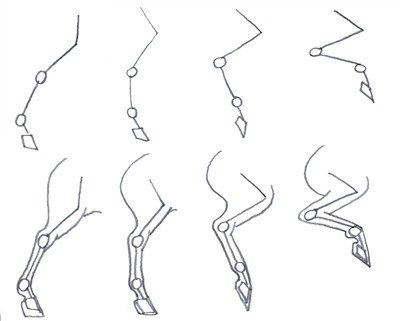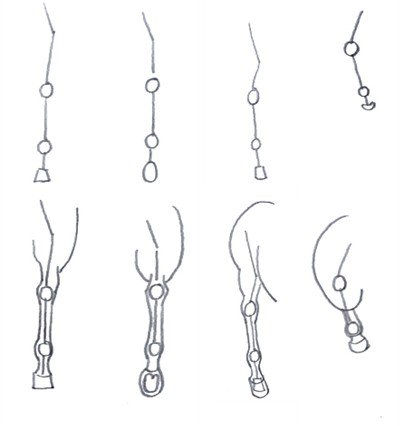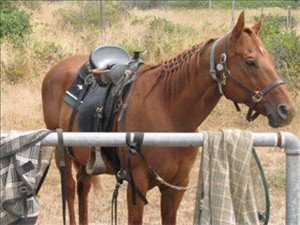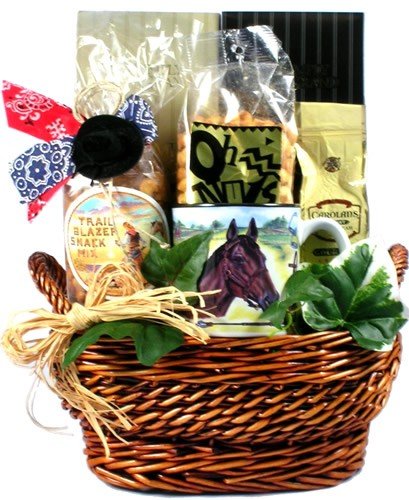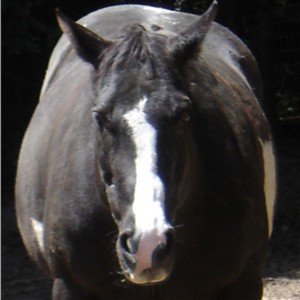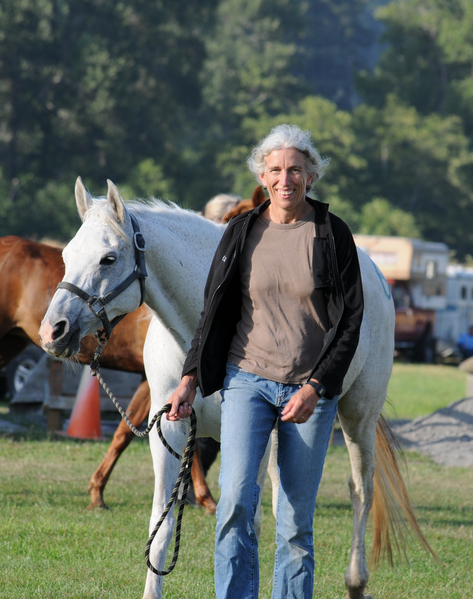How To Draw Horses Legs the Easy Way
Learn how to draw horses legs with ease. It’s simple and anyone can do it. Once you understand how a horse bends and moves those long beautiful legs, you’ll be drawing them like a pro.
Take a look at the bones of a horse's leg. Every joint seen in the front and back legs is a bending point. These joints allow for all the striking artistic poses that a horses leg can take. It looks complicated, but don’t be fooled. We are going to break it down into a very simple line drawing.
We will use lines to represent the bones in the leg. Circles to represent the major joints in the leg. A square-ish shape will represent the hoof.
Creating these horse leg stick figures give us a guide to draw in the rest of the leg. It also lets you quickly establish your leg poses before you get too far into your horse drawing.
How To Draw Horses – Front Legs
When you look at the skeleton you will notice that the upper leg bone in the front leg is longer than the cannon bone (lower leg). So make your upper leg line longer than your lower leg line regardless if your horse is running or standing. Notice the humerus bone in the shoulder is the same length as the cannon bone.
Use circles for the joints. The knee and fetlock joints are nearly the same width.
Pay attention to the pastern. It’s the small area between the hoof and fetlock joint. Look closely at the horse skeleton illustration. There is a joint above the pastern and below it. This joint allows the horse to move its hoof forward and backward. When a horse is standing the pastern is at a 45º angle.
Remember that the side view of a hoof stays the same no matter what position the horses leg is in!
Practice drawing these front leg stick figures in different poses.
Now that you can see how to draw the leg in several poses, let’s flesh it out. Remember that a horse has no muscles below the knee; only bone, ligaments and tendons. The leg from the knee down will be slender, except for the fetlock joint.
Draw the muscles in for the upper leg with two simple lines as shown in the illustrations. Show the elbow with a simple curve. For the knee use your circle as a guide. Just add two rounded lines ,front and back to indicate the knee. The lower leg will be thin. Use two straight lines from the knee to the fetlock joint.
The lines used to draw the short pastern area will change according to the horses pose. Look at the illustrations carefully and notice that the back of the pastern is curved while the front is more straight. Add the outer covering of the hoof.

How To Draw Horses – Back Legs
People often have trouble with the back legs of the horse for two reasons. They forget that the hock joint bends backwards, and they are not aware of the hip joint and the back knee (patella). The hip and patella are sort of ‘hidden’ from view.
When you look closely at the skeleton you can see the hip joint hidden deep in the horses rump. The back knee sits up very high close to the horses flank.
To simplify the back leg into a stick figure, just use circles for the hock and fetlock joints. Use lines for everything else.
Notice that the back leg cannon bone is longer than the front leg cannon bone. The tibia and cannon bone of the back leg are nearly the same length. This will help you get your proportions right when you are learning how to draw horses.
Once you are comfortable with back leg stick figures, flesh it out. Horses do not have any muscles below the hock joint either, so draw the lower leg and pastern slender, except for the fetlock joint.
The horse has a very powerful muscular upper back leg. These muscles are the engine that drives the horse forward. How much muscle you choose to add here is up to you. Quarter horses, draft horses and stallions will be more muscular here than mares, foals and other breeds.

To Get the Most from This Lesson
The fastest way to learn how to draw horses is to get confident drawing the parts of the leg. The challenge for this lesson is to grab a piece of paper and just draw stick figures of front and back legs at all kinds of angles. Mix it up.
Try drawing them at a stand still, a run, a walk, lying down and any other pose you can think of. Don’t worry about creating a masterpiece. Focus on getting comfortable with drawing horses legs in different positions. A small effort here really pays off. Stay relaxed and have fun with it!
Other Equine Topics You May Enjoy
Facts About Horses
Facts About Horses - Find fun and fascinating facts about equine behavior, world records and horse history.
Horse Gift Basket
Create the perfect horse gift basket for the horse lover in your life. Whether they own a horse or they're just crazy about them, an equine themed gift basket is sure to thrill.
Learn How to Draw Horses
Endurance Riding
Endurance riding with Berit meyer. A fun and informative interview all about the sport!
